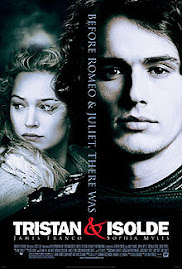 Just when you think you’ve heard everything—well, you find out you haven’t heard everything. In the little town of Harrold, Texas, located 30 minutes away from the nearest sheriff’s office, some teachers are coming to school this fall armed with concealed weapons. Honestly. The superintendent of schools, David Thweatt, convinced the school board that after two years of looking into security options for the school (security cameras, metal detectors, uniformed guards, etc.), the best protection was to allow selected teachers to carry guns.
Just when you think you’ve heard everything—well, you find out you haven’t heard everything. In the little town of Harrold, Texas, located 30 minutes away from the nearest sheriff’s office, some teachers are coming to school this fall armed with concealed weapons. Honestly. The superintendent of schools, David Thweatt, convinced the school board that after two years of looking into security options for the school (security cameras, metal detectors, uniformed guards, etc.), the best protection was to allow selected teachers to carry guns.In his defense, Superintendent Thweatt isn’t letting just any teacher carry a gun. Only those teachers who have been first approved by the school board as having the correct personality will be allowed to be armed—personality traits that include how that person reacts to a crisis. Although the policy may be radical, Superintendent Thweatt isn’t stupid enough to give guns to emotionally unstable teachers. Yes, all teachers will be entrusted with the responsibility of educating 25 or 30 kids, but they all certainly won’t be trusted with guns. So for school invaders or terroristic students, it becomes a game of Russian Roulette: Does Professor Plum have a revolver in the library? Does Miss Scarlet have a concealed weapon in the chemistry lab? The thinking is that if the misbehaving parties don’t know who is armed, they are less likely to misbehave anywhere.
Another part of the plan: Any teacher authorized to carry a gun must also receive special training in crisis intervention and hostage situations. So while the other teachers in the district went to summer workshops on math curriculum and English as a Second Language, a special elite few went to S.W.A.T. training. How much do you want to bet that Superintendent Thweatt, his friend the phy ed teacher, and his good buddy the football coach all got to wear flak vests and watch videos of the Branch Davidian standoff in Waco, Texas—while Miss Millicent, the creative writing teacher, had to settle for three continuing ed credits in ENGL 507 The Poetry of Keats?
I’m waiting for the day when the Minnesota State Colleges & Universities system offers the opportunity for select instructors and professors to carry firearms during the school day. I’m going to be first in line—nobody would ever suspect that I’m packing heat under my green corduroy jacket with the elbow patches. School terrorists would think I was just another Miss Millicent, ready to crumble at the first sight of trouble. But it would be their last thought as I whipped off my bifocals, hit the floor rolling, and took ‘em out with my pearl-handled derringer.





